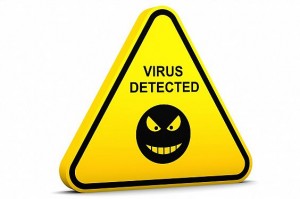Georgina Enzer
Kaspersky has revealed its forecast for the IT threat landscape for 2011-2020 and says the next ten years will spell the end of Windows OS dominance.

This variety of operating systems means that cyber-criminals will have to change their game, as creating malicious code for a wide range of operating systems is likely to be too complex. This means they have two options; either to target multiple operating systems and control many individual devices, or specialise in Windows-based attacks on corporations.
Kaspersky has predicted that the option of targeting corporations will be the more appealing one for cyber-criminals, as by 2020, targeting individual users will also become very complex as biometric user identification and payment protection systems become the norm moving towards 2020.
Cyber-criminals will have to evolve with the new operating systems, changing the way they write malicious code as these systems develop. Cyber-crime gangs are likely to begin hiring members of younger generations who are capable of writing malicious code for the new platforms. Kaspersky predicts that there may be turf wars between cyber-crime gangs over operating systems.
By 2020, the cyber-crime landscape will be divided into two groups; one that targets businesses, sometimes on demand, and one that targets services used in everyday life. Attacks such as commercial espionage, database theft and corporate reputation-smearing attacks will be in high demand. Kaspersky predicts that hackers and IT specialists will go head-to-head in this cyber-war and that state anti-cyber-crime agencies will also be brought into the battle, primarily dealing with threats to Windows and Linux and Unix systems.
The second group of cyber-criminals will target services such as transport payment cards, that are in everyday use, to compromise these systems and , make free use of them. This group will focus on hacking these systems, stealing funds from them, and altering user data for these services.
One of the internet’s most lethal threats, Botnets, are set to evolve dramatically, incorporating more and more mobile and internet-enabled devices. Zombie computers as we know them will become a thing of the past.
Kaspersky has predicted that the technologies used in the field of communications will begin to make communication close to real-life and by 2020, Kaspersky says, typing on keyboards to access the internet will be a thing of the past. This means that spammers will have to seek out new ways of sending solicitous communications to internet users.
The company says that spammers will begin to change from desktop attacks to mobile attacks and spam volumes will skyrocket as the cost of communications shrinks.
Kaspersky analysts have said that the most significant trends of the last ten years, from 2001 to 2010 were: Mobility and miniaturisation, the transformation of virus writing into cyber-crime, Windows maintaining its leading position as a vendor of operating systems for personal computers, intense competition in the mobile platform market with no clear-cut leader, a boom in social networks and search engines and increased internet shopping.











